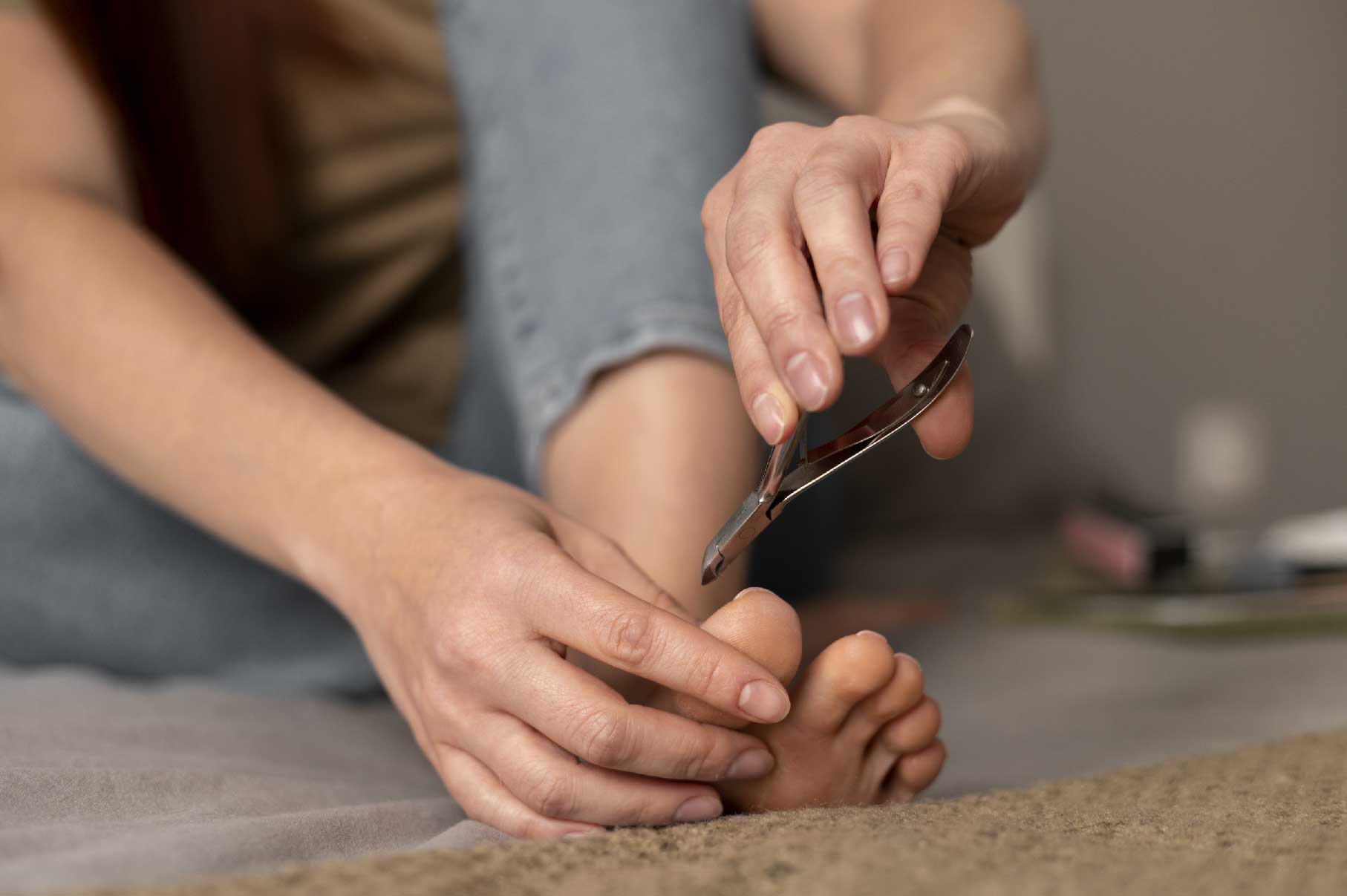
Ingrown Toenail: What It Is, How Dangerous It Can Be, and the Best Treatment Options
If you've ever felt pain near the edge of your toenail, noticed swelling or redness, or even seen pus, you may be dealing with an ingrown toenail. Though common, many people aren’t sure how to treat it properly. In this article, we’ll explore what an ingrown toenail really is, its causes, potential risks, and how to treat it safely and effectively.
What Is an Ingrown Toenail?
An ingrown toenail, medically known as onychocryptosis, occurs when the edge of a toenail grows into the surrounding skin, most commonly affecting the big toe. This can lead to pain, inflammation, swelling, and even infection.
Common Symptoms
Early signs:
Pain or tenderness along the side of the nail
Redness and swelling
Sensitivity when wearing shoes or walking
Severe symptoms:
Pus drainage
Foul odor
Bleeding
Fever in cases of advanced infection
Inflamed or overgrown skin tissue
What Causes Ingrown Toenails?
Primary causes:
Improper nail trimming – cutting nails too short or rounding the edges
Tight shoes – putting excessive pressure on the toes
Toenail injury – stubbing your toe or repeated trauma
Genetics – naturally curved or thick nails
Excess body weight – increases pressure on feet
Risk factors:
Athletes, dancers, or people who use their feet extensively
Poor foot hygiene
People with diabetes or circulation issues
Abnormally thick or curved nails
How Dangerous Is an Ingrown Toenail?
At first, it might seem minor—but if left untreated, it can lead to more serious complications, especially in people with underlying health issues.
Possible Complications:
Localized infections that can spread to surrounding tissues
Bone infections (osteomyelitis) in severe or untreated cases
Chronic nail deformity
Abscesses that require minor surgery
High-risk groups:
People with diabetes
Individuals with poor immune systems
Seniors
Those with poor blood circulation
How to Treat an Ingrown Toenail
Home Treatment (Early Stages)
Soak Your Feet
Use warm water mixed with salt (1 tablespoon per liter)
Soak for 15–20 minutes, 2–3 times a day
Helps reduce swelling and soften the nail
Lift the Nail
After soaking, gently insert a clean cotton or dental floss under the nail edge to lift it
Do this carefully to avoid further injury
Apply Topical Medication
Use over-the-counter antibiotic ointments
Avoid steroid creams unless directed by a doctor
Keep the area clean and dry
When to See a Doctor
Persistent pus or foul smell
Fever or signs of infection
No improvement after 3–5 days of self-care
If you have diabetes or other chronic health conditions
Medical Treatments
Antibiotics – topical or oral, for infection control
Minor surgery – partial nail removal or wedge resection
Chemical matrixectomy – destroys part of the nail bed to prevent regrowth
Complete nail removal – for recurring or severe cases
Medications Commonly Used
Topical treatments:
Antiseptics like Povidone-iodine, Chlorhexidine
Antibiotic creams like Neomycin, Mupirocin
Anti-inflammatory creams (use only under medical supervision)
Oral medications:
Antibiotics such as Amoxicillin, Cloxacillin (prescription required)
Pain relievers like Ibuprofen or Paracetamol
How to Prevent Ingrown Toenails
Trim Your Nails Properly
Cut nails straight across—don’t round the edges too much
Avoid trimming nails too short
Use clean, sharp nail clippers
Trim nails after a bath when they are softer
Choose Proper Footwear
Wear shoes that fit properly—not too tight
Avoid pointed toes and high heels for prolonged use
Use moisture-wicking socks
Rotate shoes to give your feet a break
Maintain Good Foot Hygiene
Wash your feet daily and dry thoroughly, especially between toes
Apply moisturizer to prevent dry, cracked skin
Inspect your feet regularly for any changes or early signs of trouble
When to Seek Urgent Medical Attention
Emergency signs:
High fever
Red streaks moving up the foot or leg
Excessive swelling or inability to move the toe
Strong, foul odor
See a doctor within 24–48 hours if:
Pus discharge continues
Pain intensifies
Inflammation spreads
No improvement with home care
What to Avoid
Don’t dig into the nail with sharp tools
Don’t try cutting the ingrown part yourself
Don’t self-medicate with painkillers without addressing the cause
Avoid tight or narrow shoes while healing
Are Herbal Remedies Effective?
While herbal or natural remedies may offer relief, they should be used cautiously and never replace standard medical treatment, especially in high-risk individuals. Always consult a healthcare professional before using any alternative methods.
Ingrown Toenails in Diabetic Patients
People with diabetes are at greater risk due to:
Slow wound healing
Lowered immune response
Poor circulation
Reduced foot sensation
Important: Diabetic patients should always seek medical attention and avoid self-treatment.
The Future of Ingrown Toenail Treatment
Modern medicine continues to advance in treating this common condition. Innovations include:
Laser treatments
Minimally invasive procedures with faster recovery
New materials for preventing recurrence
An ingrown toenail may seem like a small issue, but if left untreated, it can lead to serious complications. Proper self-care, good hygiene, and early treatment are key. For persistent or severe cases, seeking medical help ensures long-term comfort and prevents recurrence.
Prevention is better than cure—so take care of your nails, wear the right shoes, and check your feet regularly.





